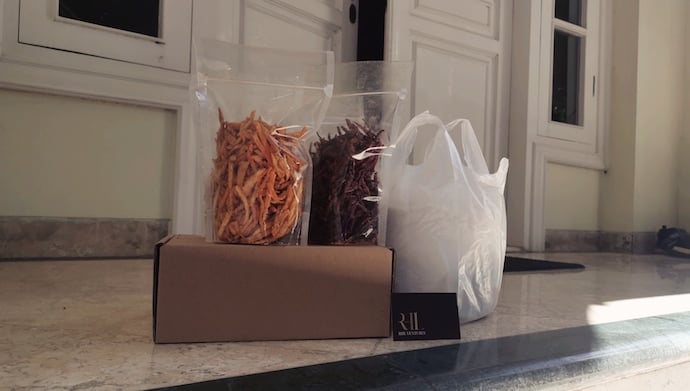
As people stay at home due to quarantines and social distancing measures, one unsung hero has been busy crossing empty streets to fulfil society’s needs: delivery drivers.
Though going out is heavily discouraged, people still have demands to be fulfilled such as getting food, delivering packages, and stocking up on household goods. The conflation of e-commerce, technology and virus fears have birthed what could be a new normal of last-mile services: contactless delivery.
Google searches for Uber Eats, Door Dash, Postmates and Grubhub jumped 53 per cent on a month to month basis, with home delivery rates doubling since the outbreak announcement in the US. Data in France shows that e-commerce purchases in Q1 20202 are 15 per cent higher compared to the previous quarter, and supermarkets such as Roth’s Fresh Markets overburdened by a 700 per cent increase of their grocery delivery services.
Contactless delivery allows couriers and recipients to complete deliveries without having to interact –reducing the likelihood of infection. Contactless delivery is not new, but since the outbreak, companies around the world have quickly been implementing them to their systems. Gojek, Grab, UberEats, Meituan and Postmates are a few names among many that have added contactless delivery options on their platforms.
The most popular form of contactless delivery is what is termed as “curb-side delivery” and many food delivery services now include a “leave the order at my door” option.
Indeed, the reception of contactless delivery has been tremendous; Chinese delivery provider giant Meituan found that between January 26 and February 8, more than 80 per cent of their orders nation-wide were requested with a contactless delivery option. Delivery data from Wuhan– revealed that 95.1 per cent of orders requested a contactless option.
Consumers are adapting behaviour to suit; many residential compounds and buildings around the world are limiting access for couriers and having them leave the package in a designated area to minimise contact between persons whilst ensuring package security.
Aside from eliminating physical interaction, many customers are increasingly turning to cashless payment options such as e-wallets instead of conventional Cash on Delivery. This change is evidently motivated by current global circumstances; however, if this does prove to be a safer, more secure and more efficient business model, why would it not persist when the outbreak ends?
The most interesting implication of this evolution of consumer preference reaches a delivery model once reserved for sci-fi movies: complete automation. A behaviour revolution of contactless delivery could tip the scale towards adoption of delivery by autonomous vehicle – instead of having drivers at all, why not take to the sky using drones that know where and when exactly to drop your package?
Also Read: As Malaysia closes borders, travel and delivery startups share responses to the current crisis
JD.com has started conducting deliveries in Wuhan using its autonomous robot delivery to reduce human to human contact. Meituan meanwhile is piloting autonomous delivery vehicle in Beijing for contactless delivery initiatives and has delivered over 600,000 times last year in Beijing and Shenzhen.
Even today, Chinese food delivery service giant Ele.me has already deployed delivery robots to send meals to rooms in a quarantined hotel over at the city of Wenzhou.
Contactless delivery is quickly sweeping the last-mile delivery industry because of pressing virus fears, with an unexpected development from this being the rise of completely automated models of delivery.
Many facets of business and society will be reoriented in a post-Coronavirus world, and it is likely how we think about deliveries will be one of the major ones.
–
For more insights by RHL Ventures on COVID-19’s impact on the transportation industry and various other sectors, please visit this link.
Register for our next webinar: How startup founders can become thought leaders
Editor’s note: e27 aims to foster thought leadership by publishing contributions from the community. Become a thought leader in the community and share your opinions or ideas and earn a byline by submitting a post.
Join our e27 Telegram group, or like the e27 Facebook page.
The post Can contactless delivery close the social distancing gap? appeared first on e27.
